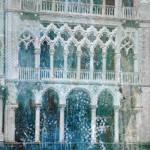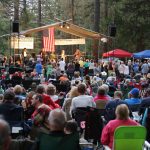By the Fire Dog, as interpreted by Patrick Reitz, Idyllwild Fire Chief
Water – that precious resource we need to live. While we can live weeks without food, we can only live days, and in some cases less without water. In the case of a disaster, it can be the dividing line between survival or not.
Water is already a scarce commodity here on the Hill. There is very little surface water most of the year, with the exception of the three lakes and a handful of ponds.
If you are on one of the three water systems, it is important to remember that water lines can be easily disrupted in the case of a large earthquake. While all three water districts have their own disaster plans, including emergency power, it will take time to repair and restore broken water lines.
So what are your plans for water in the case of a Hill disaster? Are those plans just for the Hill or do they apply for any of your residences, if you have more than one? Do you stay at relatives for extended periods of time? Do you visit relatives or friends that live in disaster-prone areas? Are they prepared for a disaster? Are you prepared for extra people that may visit or stay with you from time to time?
We are told to plan for a minimum of one gallon of water per person per day. This is for drinking water only and does not take into account the environment in which you may be living or the time of year. It also does not take into account water for cooking and a lot of the food provisions that we may have in case of a disaster require water for preparation.
When considering this, you should plan for three to five gallons per person per day. Now plan for no less than 72 hours (three days) and possibly as long as 21 to 28 days. Remember that this is only for cooking and drinking and does not extend to sanitation, except for maybe light hand-washing.
When calculating how much water you will need it is important to include extra for those with special medical conditions and your pets.
Wow, a minimum of nine to 15 gallons per person for a three-day duration! How do you keep and store that much water?
I would suggest a combination of water storage — water in bottles for immediate drinking needs and larger containers for more storage capacity. Cases of commercially bottled water are a good way to stock up on drinking water. The 5-gallon water bottles used for dispensers are also good, however they can be awkward to store.
Water has been packaged in metal cans and Mylar pouches that have extended shelf life when stored properly. Pay attention to expiration dates and cycle your water to maintain freshness.
For your larger storage needs, consider food-grade buckets and barrels. Always clean them with soap and water and rinse thoroughly before use. You should not use jugs and bottles that have been used for milk, juice or anything but water, because the residues can lead to bacteria growth.
There are also some excellent temporary storage systems out there if you are able considering sheltering-in-place for a forecasted disaster such as a hurricane. There is a “bag” that you can put into your bathtub and fill it from the faucet that holds up to 100 gallons.
While water does not expire, it can pick up the taste of the plastic or the containers that it is stored in. Also, if the water is not stored properly, in a cool area out of direct sunlight, it can develop algae and bacteria growth.
You should have some disinfecting tablets or drops on hand in case your water source should become contaminated, or you are not sure if it has become contaminated. You can also use basic household bleach, not the scented kind, as a disinfecting agent — only a few drops are needed.
You may also need to use a disinfecting agent for storing your water in large quantities, like the 55-gallon barrels. Boiling water for disinfecting is also an option but only if you have planned for a fuel source to do so in the case of a disaster.
Water filters can also be considered if they are rated to filter out the contaminants that could be found in the water that you may plan on using. Water filters may also have limiting factors such as how much and how fast you can filter water.
It is important to know some other sources of water in the time of disaster. You should learn how to safely drain the water from your pipes and the hot water heater tank in your house. What other water sources might you have? Rain barrels? Solar panels for hot water?
Please keep in mind that this article is not meant to be an all-inclusive information source for water needs during a time of disaster. Rather, it is meant to get you thinking and encourage you to not only prepare but further research what you need to do to be properly prepared in the case of a disaster.
Coming up, we will discuss food, power, fuel, and even pets.
Get involved!
Here are some additional resources to consider:
- Mountain Disaster Preparedness, or MDP.
- American Red Cross (www.redcross.org)
- Federal Emergency Management Agency (www.fema.gov)
As always, I welcome your comments and questions. Please feel free to contact me care of the Town Crier or c[email protected].
I’ve got some smells to sniff …
Remember to play it safe in all that you do!










